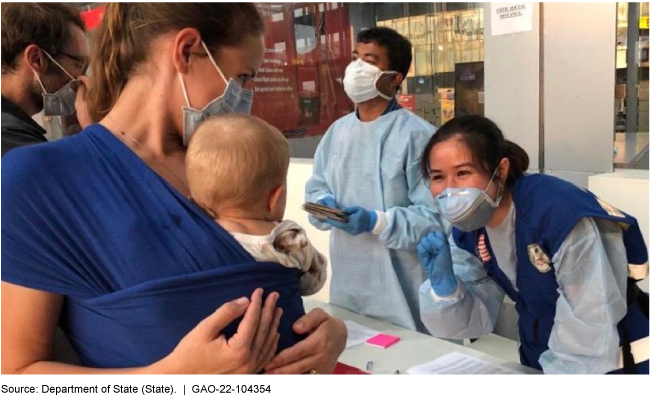Articles
Jo Freeman: There’s Plenty To Do at the RNC – If You Have the Right Credentials
by Jo Freeman
Every national nominating convention has plenty of auxiliary events, some authorized, some not. Getting space can be a challenge; getting the word out even more so. But they do it nonetheless. Press were given a RNC 2024 Master Event Calendar, which was updated a few days later. Events began on Sunday and ended on Thursday. The actual convention sessions were just one item on the list. The calendar said if an event was Open or Closed to press, and also whom to contact to register. I’m going to describe some of the events, including a couple I went to, and a couple I was turned away from.
Since my focus is on women, I obviously wanted to go to those events – if I could.
The National Federation of Republican Women is the largest grassroots Republican women's organization in the country with hundreds of clubs. Founded in 1938, its members made the phone calls and knocked on the doors that elected Republican candidates for decades. It’s Tuesday luncheon featured Arkansas Governor Sarah Sanders. The Master Calendar said it was SOLD OUT and they wouldn’t let me in. I was able to get into their lounge at the Fiserv Forum Wednesday evening, where I was repeatedly asked if I was a member, and if not, would I join. “I’m press,” I said. “I can’t join anything partisan.” I then said: “What brings you here?” On hearing that, finding anyone willing to chat with me was like pulling teeth.
Moms for Liberty met in a concert hall that afternoon. I had pre-registered, and I got in. From high in a balcony seat I listened to several people talk about the evils of transgenderism. It’s webpage says WE BELIEVE Power Belongs to the People. Sound Familiar? With a focus is on parental rights, it wants to “STOP WOKE indoctrination.”
Tuesday I went to “The New Mavericks” reception co-hosted by the Black Republican Mayors Association and the Georgia Republican Party. They honored Sen. Tim Scott, four Congressmen and two Georgia delegates – all male. There was only one mayor on stage, from Aurora, IL. The chair of the Georgia Republican Party was the one white man on the stage. At that event, women served; they didn’t speak. The RNC reported that 55 delegates to the 2024 convention are Black, up from 18 in 2016.
I missed the Independent Women’s Forum toast to “Women Who Make Our Country Great” because I went to Convention Fest: The Official Delegate Experience, which was held in the streets outside the Fiserve Forum and Baird Hall as well as some space inside Baird. To get to that one you not only needed a credential of some sort, but a USSS pass (which I have).
Concerned Women for America parked its pink bus across from the Baird Center the week before the RNC. No one was home. When Convention Fest opened on Tuesday afternoon, they set up a pink tent, from which its leaders preached to whomever passed by. It calls itself “the nation’s largest public policy women’s organization” but its focus is evangelical Christian. The slogan on the side of its pink bus captures this emphasis: “She Prays, She Votes.” A prayer precedes each sermon.
 The US Housing and Mortgage Market, Risks and Resilience: Federal Reserve Governor Michelle W. Bowman
The US Housing and Mortgage Market, Risks and Resilience: Federal Reserve Governor Michelle W. Bowman
"In total, home prices in September were 21 percent higher than in June 2020. Home price increases are also widespread. In September, about 90 percent of American cities had experienced rising home prices over the past three months, and the home price increases were substantial in most of these cities... The demand for housing has risen for several reasons. Interest rates are low, families have accumulated savings, and income growth in the past 18 months has been quite strong. Families are also reconsidering where, and in what kind of home, they want to live. Purchases of second homes, for example, have been somewhat high in the past 18 months. Meanwhile, the supply of new homes has been held back by shortages of materials, labor, and developed lots." more »
 The National Institutes of Health’s Rapid Acceleration of Diagnostics (RADx): When to Test Offers Free Online Tool to Help Individuals Make Informed COVID-19 Testing Decisions
The National Institutes of Health’s Rapid Acceleration of Diagnostics (RADx): When to Test Offers Free Online Tool to Help Individuals Make Informed COVID-19 Testing Decisions
The When To Test Calculator for Individuals was developed and tested by computer modelers to help people determine if they are at risk of getting or transmitting COVID-19 based on just a few variables, such as vaccination status, transmission rates in the geographic area, and mitigation behaviors. The calculator includes answers to frequently asked questions and links both to resources on testing strategies and on obtaining supplies, including home tests. The National Institute of Biomedical Imaging and Bioengineering (NIBIB) supported development of the When To Test website and calculators through the RADx Tech program. more »
 The Federal Open Market Committee Statement: The Path of the Economy Continues to Depend On The Course Of The Virus
The Federal Open Market Committee Statement: The Path of the Economy Continues to Depend On The Course Of The Virus
"The path of the economy continues to depend on the course of the virus. Progress on vaccinations and an easing of supply constraints are expected to support continued gains in economic activity and employment as well as a reduction in inflation. Risks to the economic outlook remain.The Committee seeks to achieve maximum employment and inflation at the rate of 2 percent over the longer run. With inflation having run persistently below this longer-run goal, the Committee will aim to achieve inflation moderately above 2 percent for some time so that inflation averages 2 percent over time and longer‑term inflation expectations remain well anchored at 2 percent." more »
 GAO, COVID-19: State [Department] Carried Out Historic Repatriation Effort but Should Strengthen Its Preparedness for Future Crises
GAO, COVID-19: State [Department] Carried Out Historic Repatriation Effort but Should Strengthen Its Preparedness for Future Crises
"Despite acting swiftly to assist Americans abroad, State did not follow some of its policies and lacked guidance for certain aspects of its repatriation effort. For example, as of May 2021, an interagency group State established to coordinate plans to evacuate U.S. citizens abroad in emergencies had not met since April 2019, hampering interagency communication early in the crisis. Also, incomplete guidance for calculating and documenting actual costs of State-chartered flights led to missing or inconsistent documentation and limited State's ability to show that the prices it charged passengers complied with its fare policy." more »






